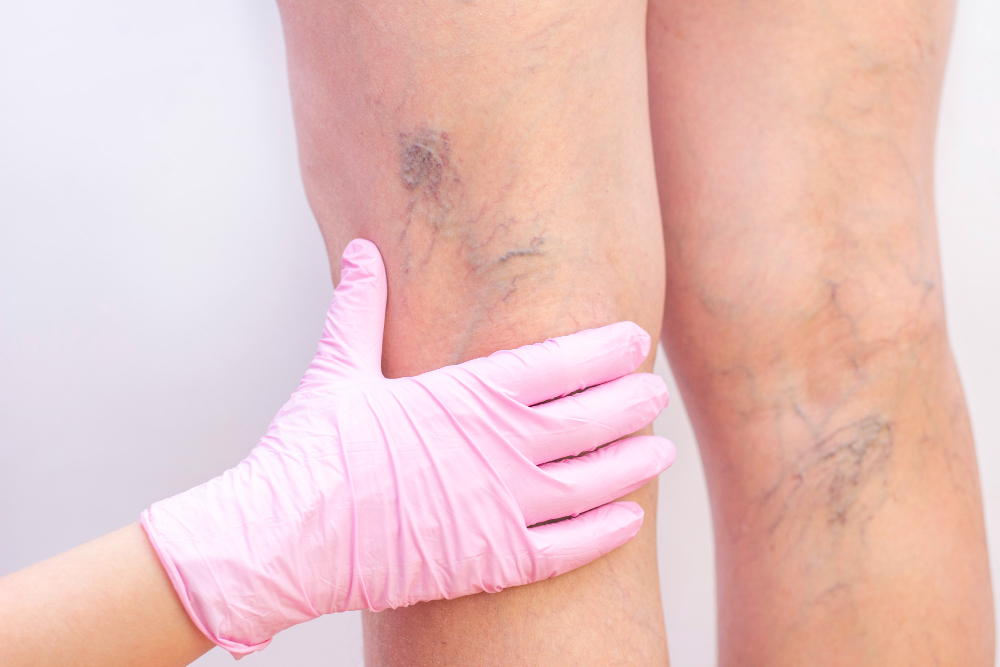The body knows the value of blood, when we bleed as a result of an injury or accident, it responds immediately by sending clotting factors to the bleeding site to prevent excessive blood loss. However, in some people, blood clots in the blood vessels usually in one of the deep veins in the legs or thighs. They can also occur in other places of the body. This condition is known as Deep Vein Thrombosis since a clot is also known as a thrombus. Sometimes a blood clot separates from the vein walls and travels up to the lungs. When a free blood clot (called an embolus) enters the lungs and stops blood flow, it is referred to as pulmonary embolism (PE). PE is a very serious condition that requires immediate medical attention. A blood clot in the thigh has a higher chance of reaching the lungs than a clot in the lower leg.
Causes and risk factors
Deep Vein Thrombosis typically occurs after 60 years of age, but it can occur at any age. There are many factors that contribute to DVT. An increase in risk factors can increase the likelihood that DVT will occur in a person. Damage to the inner vein can occur due to an accident, surgery, an immunological response, or inflammation. Furthermore, slow or sluggish blood flow that may occur after a pelvic or leg fracture, surgery or extended illness, and prolonged bed rest or travel, all raise the risk of DVT. Certain hereditary factors cause blood to thicken and clot more than normal (thrombophilia). This occurs when oestrogen or birth control is used. Heart failure, cancer and cancer treatment, and obesity are all significant risk factors for DVT. Smoking also raises the chances of having DVT.
Symptoms
DVT symptoms can be caused by DVT or by PE. If the person is having any of the following symptoms, they should contact a doctor right away, as they can lead to fatal complications.
Symptoms of DVT are experienced only by half of the people and mostly they are due to blood clot in the leg. The person may experience pain and swelling in the leg or along one single vein in the leg. It can increase while walking or standing. The swollen area may feel warm, and the color of skin becomes red or discolored. Most of the people who suffer from DVT don’t know unless they experience symptoms of PE, which includes sudden unexplained shortness of breath, pain while breathing deep, spitting blood while coughing, and rapid heartbeat.
Diagnosis
It can be difficult to diagnose DVT based on symptoms alone. Therefore, apart from going through your medical history and medical examination, your doctor may order special tests to rule out other possibilities before confirming it is DVT.
A complete medical history is essential for determining whether the person has taken or is currently taking any medications, has had any recent surgeries, has had any injuries, or has undergone any cancer treatment. A physical examination includes examining the symptomatic leg, taking blood pressure, and evaluating the heart and lungs. The most common diagnostic tool for DVT is ultrasound, which may detect blood flow through arteries and veins. If ultrasonography does not provide a clear picture, venography will be performed. Venography begins with the injection of a dye into the vein, followed by an X-ray of the affected leg.
The X-ray detects the blood clot in the vein. A D-dimer test is used to determine the amount of a chemical that is released when a blood clot dissolves. The risk of DVT increases if the drug is present in high concentrations in the blood. A blood test may be performed to determine whether the person has a hereditary clotting disease that may cause DVT. Magnetic resonance imaging and computer tomography are sometimes used to search for structures and organs inside the body.
Treatment
Treatment for DVT aims at stopping the further growth of the blood clot, preventing the breaking of the blood clot, and decreasing the chance of another blood clot. Treatment for DVT includes medicines and therapies.
Medicines: Medicines include
- Anticoagulants: Anticoagulants are blood thinners that minimize the likelihood of a new blood clot but do not dissolve the existing blood clot; nevertheless, they can prevent the existing blood clot from getting larger. Heparin, which is administered intravenously, and warfarin, which is administered orally, are the most commonly used anticoagulants. Warfarin often takes 2–3 days to begin acting, so heparin is recommended until warfarin begins to work. As warfarin is harmful during pregnancy, only heparin is used.
- Thrombin inhibitors: Patients who are unable to take heparin are given thrombin inhibitors, which inhibit the clotting process.
- Thrombolytics: These are only used in life-threatening conditions since they can induce unexpected bleeding. In severe cases, thrombolytics are given to dissolve a blood clot more quickly.
Compression stockings: The individual may be instructed to wear compression stockings to alleviate pain and swelling and to prevent post-thrombotic complications.
Surgical intervention: The placement of a vena cava filter is done surgically. If the patient is unable to take anticoagulants or is taking anticoagulants yet blood clots continue to form, a filter is put into the vena cava vein. This filter breaks down blood clots and keeps them from entering the heart and lungs.
Side effects of anticoagulants
Anticoagulants are medications that inhibit the coagulation or clotting process. As a result, taking them may cause easier bleeding and a longer clotting time. The individual may be easily bruised. Any sustained bleeding should be considered an emergency. If a pregnant woman takes the anticoagulant warfarin, it can result in birth abnormalities. Other over-the-counter medications, vitamins, and vitamin K-rich foods can interfere with anticoagulants. As a result, it is critical to see a doctor before taking any medications or making any dietary modifications.
Preventing DVT
If the person knows that he or she is at risk for DVT, a few tips can help them prevent it.
- Go for regular check-ups.
- Follow all instructions and take medicines as prescribed by the doctor.
- Try not to be in bed for a long time after illness and surgery.
- Exercise or move the lower leg when travelling a long distance.
- Walk up and down the aisle of a bus, train, or airline can help with long journeys lasting longer than 4 hours.
- If travelling by car, make it a point to stop and walk every hour.
- Wear loose and comfortable clothes while travelling.
- Control your blood pressure.
- Reduce weight.
- Drink plenty of fluids and avoid alcohol.
- Quit smoking.
Outlook
As blood is one component that travels throughout the body, there is a chance that the functioning capability of organs will be lost if there is any problem with circulation. People diagnosed with DVT should remember to follow their doctor’s instructions carefully and regularly, as the chance of one more clot is higher in them. Learning a few precautionary steps to cope with DVT will help patients with DVT lead a normal life.



